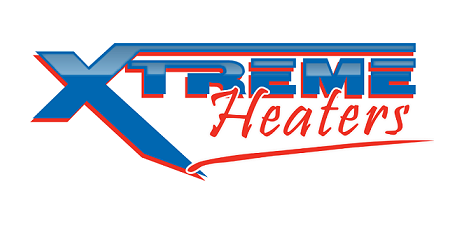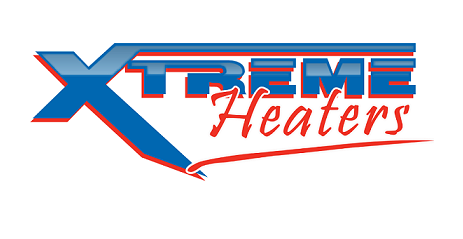MIL-Spec Testing: Proven Performance in Extreme Conditions
At Xtreme Heaters, we understand that your equipment needs to perform reliably in any environment. To ensure our heaters meet the highest standards, we subject them to rigorous MIL-STD (Military Standard) Testing. These tests push our heaters to their limits, simulating the most extreme conditions they might face on your boat or RV and well beyond that point. Here’s a breakdown of the tests we conducted.
What is MIL-STD Testing?
MIL-STD-810E is a set of military-grade testing standards designed to evaluate how well products perform under environmental stresses. These tests are commonly used for equipment that must endure harsh conditions, and passing them is a mark of exceptional durability and reliability.
Xtreme Heater MIL-STD Testing
Vibration Testing The goal of vibration testing is to identify potential weak points in the heater’s construction. By exposing the product to sustained vibration across a range of frequencies and intensities, we ensure that every component—electrical connections, mounts, and casings—can endure prolonged mechanical stress without failure.
MIL-STD-810E Method 514.4.
How Vibration Testing is Conducted
-
Frequency Range and Duration
- The heater is subjected to vibrations across a broad frequency range, typically from 5 Hz to 500 Hz.
- The test may involve cycling through specific frequencies to mimic various vibration patterns experienced in different scenarios (e.g., engine vibrations, turbulent waters, or off-road conditions).
- The testing duration often spans multiple hours or more, depending on the exact procedure, to ensure the heater remains operational under extended stress.
-
Random and Sine Vibration
- Random Vibration: Mimics real-world, unpredictable vibrations by generating a mix of frequencies simultaneously.
- Sine Sweep Vibration: Applies vibrations at gradually increasing or decreasing frequencies to pinpoint resonant frequencies where failure is most likely to occur.
-
Acceleration Forces
- The test applies varying levels of acceleration (measured in g-force) to simulate different vibration intensities. This could range from light tremors to severe shaking, depending on the operational environment the heater is expected to face.
Failure Identification and Improvement
The testing process pushes the heater to its limits to find any weak points. Components are inspected for signs of wear, loosening, or breakage. If a weakness is found, we strengthen those areas to ensure the final product can handle even tougher conditions.
Xtreme Heaters passed these tests with ease, proving their unmatched durability and reliability.
Video cannot pick up how fast the table is vibrating.
2. Humidity Testing
MIL-STD-810E Method 507.3
- Purpose: Simulates prolonged exposure to high humidity to test for environmental resistance.
- Test: The heater is placed in a controlled chamber with elevated humidity levels, assessing its ability to resist moisture and prevent corrosion.
- Benefit: Our heaters are built to endure the damp, humid conditions commonly found in marine and RV environments.
3. Low Temperature Testing
MIL-STD-810E Method 502.3
- Purpose: Tests the heater’s ability to function in extreme cold, down to -40°C (-40°F).
- Test: The heater is subjected to freezing temperatures to ensure it can start and operate effectively in the coldest conditions.
- Benefit: Whether you’re winterizing your boat or camping in freezing weather, you can rely on your Xtreme Heater to keep critical systems above freezing.
How the Test is Performed
-
Controlled Cold Chamber
- The heater is placed in a specially designed cold chamber where the temperature is gradually lowered to -40°C (-40°F).
- The chamber maintains this extreme cold for a set duration to simulate prolonged exposure to freezing conditions.
-
Power-Up Under Load
- Once the heater reaches the target temperature, it is powered on to ensure it can start and operate as expected.
- The heater is tested under normal operating conditions, including its ability to maintain critical systems above freezing.
-
Functional and Structural Checks
- During and after the test, all components are inspected to ensure they continue to function without failure.
- Key systems like the thermostat, heating element, and electrical connections are evaluated for performance and reliability.
4. High Temperature Testing
MIL-STD-810E Method 501.3
- Purpose: Verifies that the heater operates safely and efficiently in extreme heat, up to 60°C (140°F).
- Test: The heater is placed in a high-temperature environment to ensure it doesn’t overheat or fail under intense heat conditions.
- Benefit: Even in the hottest climates, your Xtreme Heater is built to maintain optimal performance and safety.
How the Test is Performed
-
Controlled Heat Chamber
- The heater is placed in a specialized heat chamber, where the temperature is gradually increased to 60°C (140°F).
- This simulates exposure to prolonged high temperatures, replicating real-world conditions in enclosed spaces like engine compartments.
-
Continuous Operation Under Heat Stress
- Once the target temperature is reached, the heater is powered on and run at its maximum load.
- The unit is monitored for sustained operation to confirm that it does not overheat or experience performance issues.
-
Component Inspection and Monitoring
- During the test, sensors track the heater’s internal and surface temperatures to ensure they remain within safe operating limits.
- Post-test inspections are conducted to check for any signs of damage, such as warping, component failure, or degradation of materials.
What This Means for You
Passing these rigorous MIL-STD tests proves that Xtreme Heaters are built to handle the most demanding environments. Whether you’re navigating freezing waters or cruising through sweltering heat, our heaters deliver reliable performance.
Why Choose Xtreme Heaters?
- Durability: Engineered to withstand vibration, moisture, and temperature extremes.
- Reliability: Proven to perform under military-grade testing conditions.
- Peace of Mind: You can count on Xtreme Heaters to protect your boat or RV, no matter where your adventures take you.




